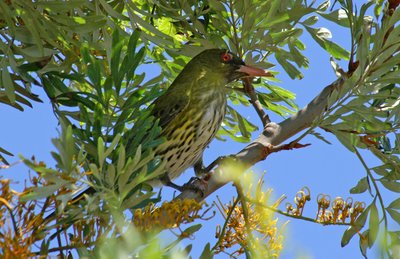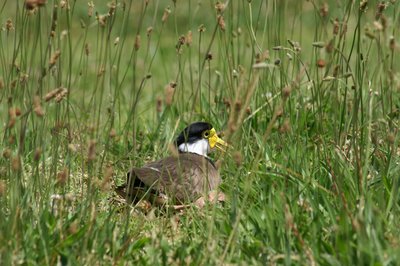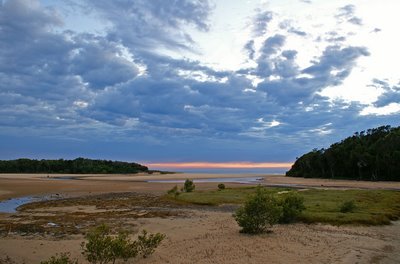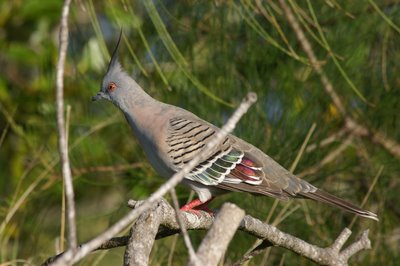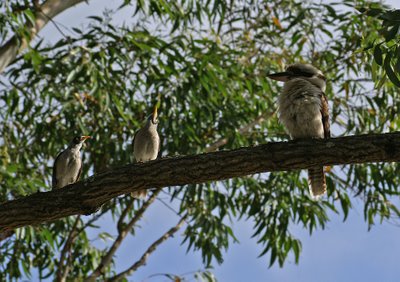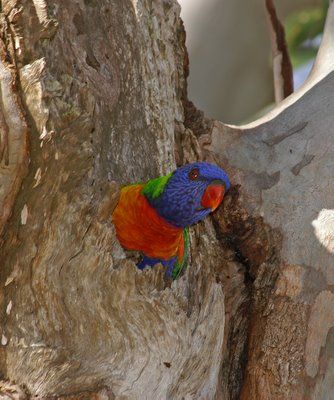
Azure Kingfisher.

The ubiquitous Laughing Kookaburra.


Australian Pipit.


Bell Miners - extraordinary birds! They sound exactly like tree-frogs and look like green and yellow teddy bears!

Brown Gerygone, a relative of Malaysia's own Golden-bellied Gerygone.

Brown Thornbill. These seem to be the default small warbler-like bird of the bush. Wherever I went, whenever I saw a small bird in a bush, tree or bit of scrub, it would almost inevitably turn out to be one of these - very irritating after a while!
Some other little birds:

Striated Thornbill.

Weebill.


Speckled Warbler.

Brush Wattlebird - another one that's hard to get excited about!


This one, on the other hand, was a lifer - a Spiny-cheeked Honeyeater.
Honeyeaters are a really diverse group. A few more here:


New Holland Honeyeater.

White-cheeked Honeyeater.

White-eared Honeyeater.

Yellow-faced Honeyeater.

Eastern Spinebill - another honeyeater!
We have three whistler species in Malaysia - here are a couple from Australia.


Golden Whistler.



And Rufous Whistler.


Shrike-thrushes are closely related to whistlers - these are Grey Shrike-thrushes.



Having seen Eastern Bristlebird on a previous trip, I was pleased to see Rufous Bristlebird near Melbourne - very close but difficult to see in the open!

Superb Blue Wrens are really common, but being small and active, are hard to photograph well. This is a female.

However, I got lucky when I found a nesting pair right in front of the wader hide at Olympic Park. They were feeding young, and this male came back to the same perch just in front of the hide every time!






This last pic is of another male, also feeding young in the same area. I love the amazing headshape when seen from the front!

A few more 'bits 'n' bobs' to finish off.

Double-banded Finch was a new bird for me.


A couple of Eastern Yellow Robins.

It was odd to see Eurasian Skylarks. Just one of quite a few European bird species brought in by early English settlers to remind them of home!

Silvereye is the common Australian white-eye.

White-throated Treecreeper - no relation to the European and Asian treecreepers - though filling a similar ecological niche.
Spotted Pardalotes are good fun. Not only do they look good, they are insatiably curious, and will come and investigate any odd squeaking noises down to point-blank range.





